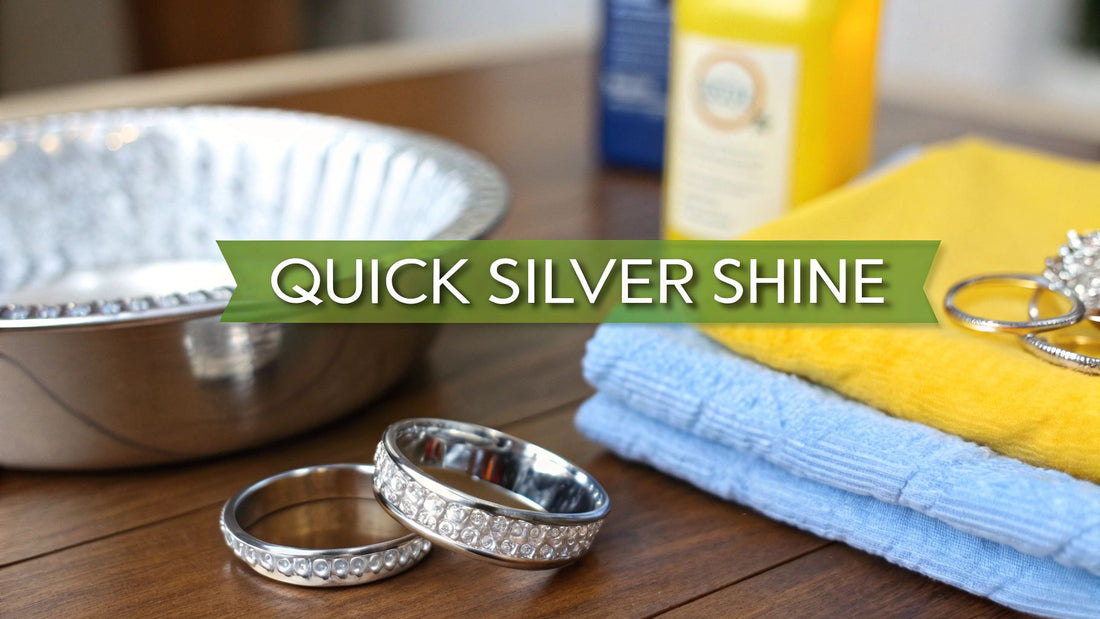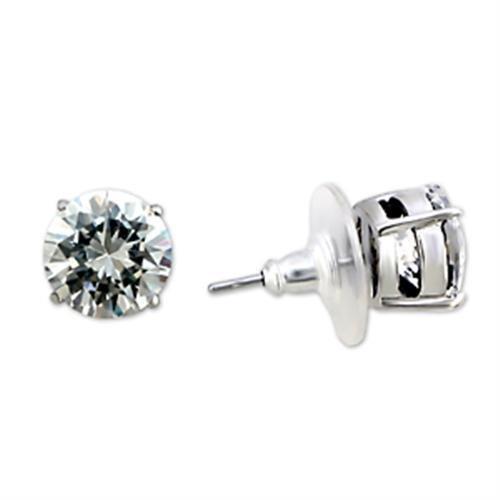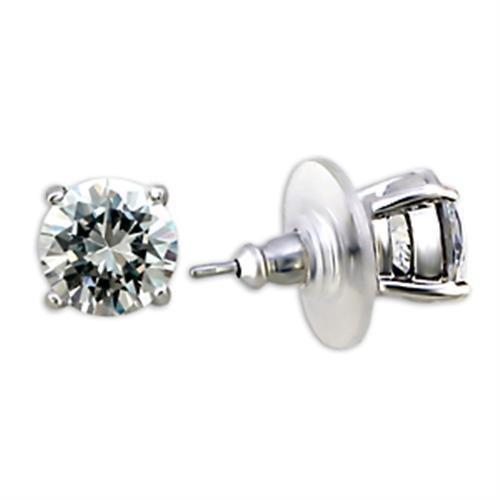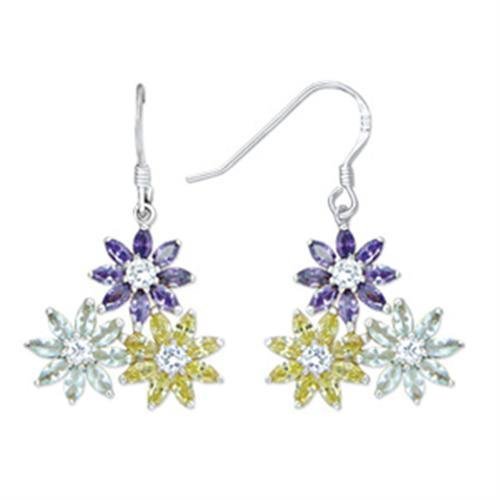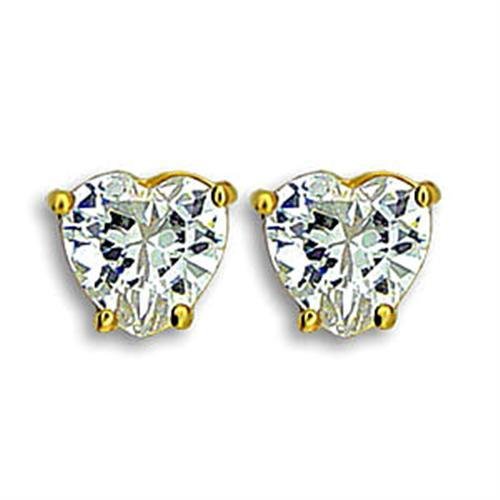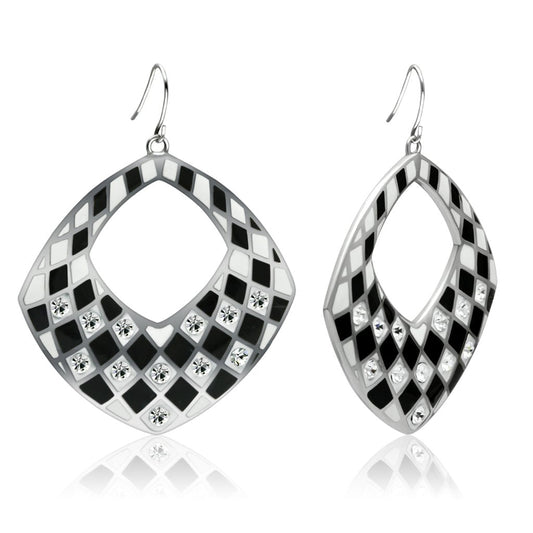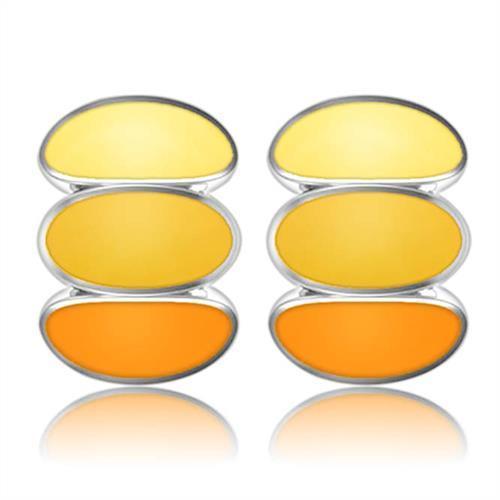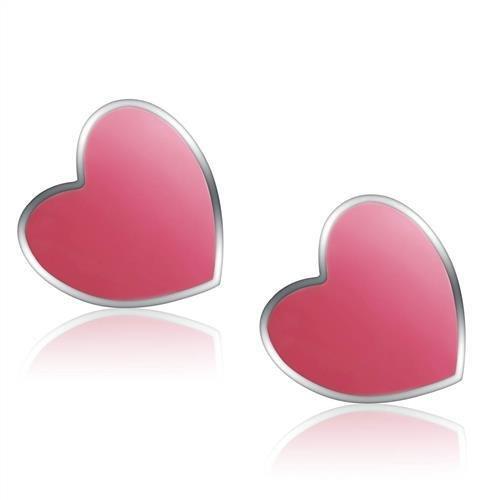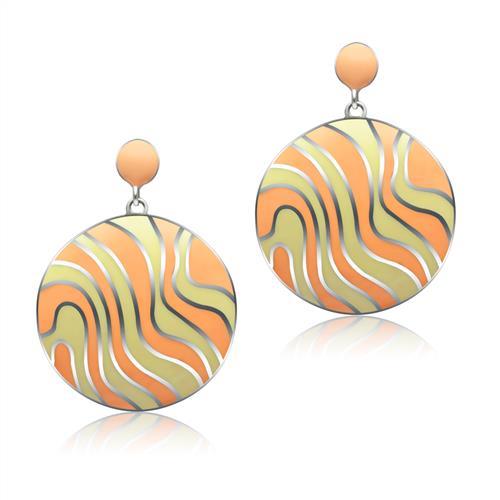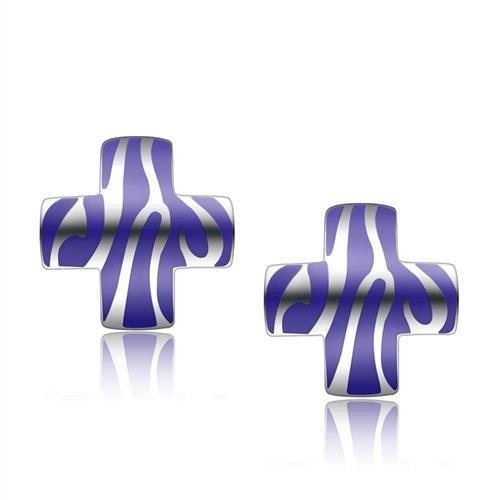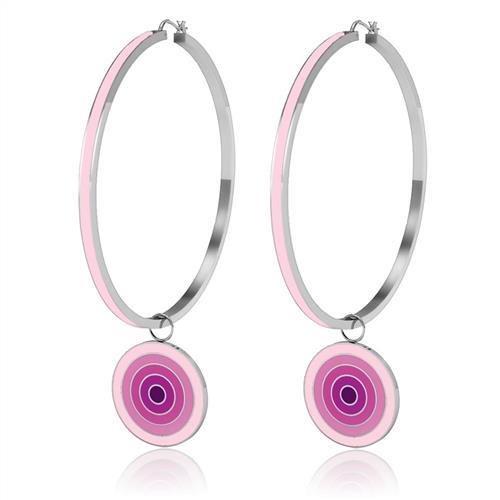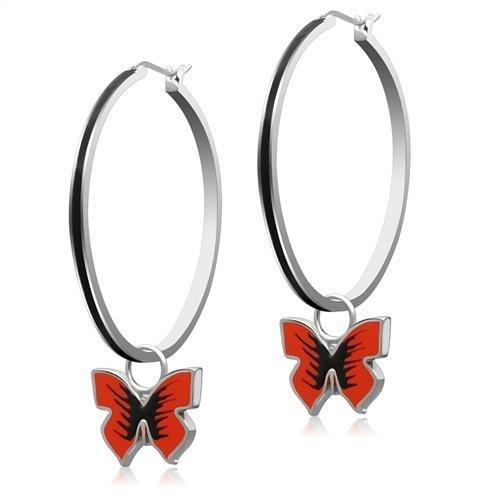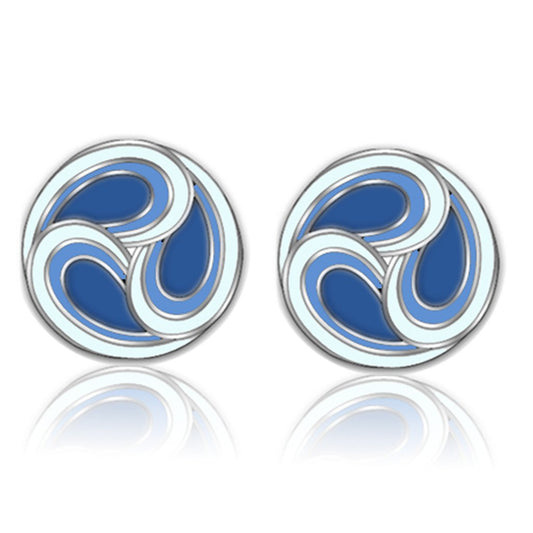Wondering how to clean sterling silver jewelry at home? For a light, routine clean, a bit of mild dish soap and warm water is usually all you need. But when tarnish starts creeping in, a simple baking soda paste can work wonders to restore that brilliant shine without reaching for harsh chemicals. The best part is that you probably have everything you need in your kitchen already, and our step-by-step guide will walk you through the process for a perfect, sparkling finish every time.
Why Your Sterling Silver Needs Cleaning
Before we get into the "how," let's quickly cover the "why." Understanding why your favorite pieces lose their sparkle in the first place is key to keeping them looking their best. Sterling silver isn't pure silver—it's an alloy made of 92.5% silver mixed with 7.5% other metals, usually copper. This blend makes the jewelry durable enough for daily wear, but it also makes it prone to tarnish.
Tarnish is a thin layer of corrosion that forms when the metal reacts with sulfur compounds in the air. It’s a completely natural process that turns the silver's surface dark and dull. This is exactly why choosing the right cleaning method is so important. A study found that over 75% of households own some silver jewelry, so knowing how to care for it safely is a must. Grabbing a paper towel or using aggressive chemicals like bleach can leave permanent scratches or even ruin delicate gemstones. For more expert tips on what to avoid, Harper's Bazaar has some great advice on safe silver handling.
Choosing the Right Method
The best way to clean your silver really comes down to two things: how tarnished it is and whether it has any gemstones. A simple, solid silver chain can handle a more thorough cleaning than a delicate ring set with a porous stone like an opal or pearl. This decision tree is the first thing I mentally run through before cleaning any piece of sterling silver at home.
The main takeaway here is pretty simple: always start with the gentlest method, especially for pieces with gemstones. A mild soap and water bath is your go-to. For plain silver that's looking a bit dull, a slightly stronger baking soda solution is a fantastic and safe way to lift that tarnish right off.
Remove Tarnish With Baking Soda And Foil
Here's a little kitchen science that works wonders, especially for pieces that don't have any gemstones. The baking soda and foil method is one of the most effective—and gentlest—ways to clean sterling silver at home. It uses a chemical reaction called ion exchange to lift tarnish right off, which means no harsh scrubbing is needed on delicate surfaces. This is a complete lifesaver for intricate items like an old family heirloom chain or a ring with detailed filigree work where hand-polishing is nearly impossible.
It’s an incredibly popular technique for a good reason. One survey of home cleaning enthusiasts found that a staggering 85% of respondents successfully restored their silver's original shine using this exact method. It’s even the preferred choice for 60% of people who clean silver at home, mainly because it's so simple and has a low environmental impact.
Getting The Process Just Right
First things first, grab a non-metal bowl (glass or ceramic is perfect) and line it with a sheet of aluminum foil. You’ll want to make sure the shiny side is facing up.
Next, bring some water to a near boil—you want it hot, but not bubbling over—and carefully pour it into the bowl. For every cup of water, add about two tablespoons of baking soda and give it a good stir until it’s all dissolved.
Now for the magic. Gently place your sterling silver pieces into the solution, making sure every item is touching the aluminum foil at the bottom. This physical contact is absolutely crucial for the chemical reaction to work. You should see the tarnish start to lift off the jewelry and move to the foil almost right away.
Key Tip: Let your jewelry soak for anywhere from 5 to 10 minutes, depending on how tarnished it is. Try not to overcrowd the bowl; you want to make sure every piece has plenty of contact with the foil.
Final Steps For A Perfect Shine
Once the tarnish has vanished, carefully fish your jewelry out with tongs to avoid the hot water. Give each piece a good rinse under cool running water to wash off any leftover baking soda residue.
To finish, gently pat the items dry with a soft, lint-free cloth, like a microfiber towel. A quick polish at this stage helps prevent water spots and really brings out that brilliant, like-new luster. For an even more professional finish, a dedicated silver polishing cloth from a jeweler will give your pieces an unmatched gleam.
If you're curious about other techniques, from abrasive pastes to different chemical reactions, it's worth exploring additional methods for safely removing tarnish from silver.
Gentle Methods for Delicate Pieces and Gemstones
While a hot chemical soak can work wonders on plain silver, it's a definite no-go for your more delicate pieces. Jewelry featuring porous gemstones like pearls, opals, turquoise, or amber requires a much softer touch to avoid irreversible damage. Aggressive cleaning methods can strip these stones of their natural oils, leading to dullness or even cracking. This is exactly why a gentle soap-and-water bath is the gold standard for cleaning sterling silver with sensitive settings.
Creating a Safe Soap Bath
To get started, just fill a small bowl with warm water and add a few drops of a mild, phosphate-free dish soap. You don't need a mountain of suds—just enough to help lift away light grime and oils that have built up over time.
Submerge your jewelry in the solution for just a few minutes. If you see some stubborn buildup, you can use an extra-soft-bristled brush, like a baby toothbrush, to gently clean around the stone and setting. Never scrub the gemstone directly.
After its quick bath, rinse the piece thoroughly under cool running water and pat it dry with a soft, lint-free cloth. Make absolutely sure it’s completely dry before you put it away.
A professional polishing cloth is a fantastic investment for these items. The lighter side gently removes tarnish, while the darker side polishes the silver to a high shine without harming the stone. Many jewelry stores, including Precious Pulse Jewelry, offer these cloths as an affordable way to maintain your collection.
Handling Targeted Tarnish
What if the silver is tarnished but the stone looks fine? For targeted tarnish removal, a simple baking soda paste is a great option. Just mix two parts baking soda with one part water to create a thick, frosting-like paste.
Carefully apply this paste only to the silver parts of your jewelry, avoiding the gemstone entirely. Let it sit for a minute or two before gently rubbing it off with your finger or a soft cloth. Rinse well, dry completely, and you're good to go.
Taking these careful steps is a core part of knowing how to clean sterling silver jewelry at home safely. For more specialized advice, check out our detailed guide on how to care for and maintain the quality of a gemstone pendant.
Brighten Silver With Vinegar And Lemon
If you'd rather skip the harsh chemicals, your kitchen pantry is a goldmine for tackling tarnish. A simple mix of white vinegar and lemon juice can restore a brilliant shine without any toxic fumes, making it a fantastic choice if you have sensitive skin or just prefer a greener approach. The natural acidity in both ingredients is surprisingly tough on the sulfur compounds that cause sterling silver to discolor. For pieces with light to moderate tarnish, this method is gentle enough to be safe but powerful enough to work.
And you're not alone in turning to pantry staples. A recent study found that 90% of DIY jewelry cleaners actually preferred using natural ingredients like white vinegar because they're safe and effective. It just goes to show you don't need a lab full of chemicals to get your jewelry looking its best. You can find more great tips on natural silver cleaning methods over at Vrai.com.
The Perfect All-Natural Recipe
To whip up this cleaning solution, you just need a few things you probably already have. This simple recipe is great for bringing back that shine without being too aggressive on the silver itself.
- ½ cup of white vinegar: This is the workhorse of the solution.
- Three drops of lemon essential oil: For an extra boost of cleaning power and a fresh scent.
- A sprinkle of baking soda: This creates a gentle fizzing action to help lift grime.
Mix everything together in a glass or ceramic bowl—never metal. Gently place your silver jewelry inside and let it soak for about 10 to 15 minutes. Once the time is up, rinse everything thoroughly under cool running water to wash away the acidic solution, then pat it completely dry with a soft, lint-free cloth.
This vinegar soak is my go-to for solid, all-silver pieces like chains, plain rings, and bracelets. But, you’ll want to steer clear of this method for jewelry with delicate scrollwork or porous gemstones like turquoise or pearls, as the acid can be too harsh and cause damage.
Proactive Care And Smart Storage
While cleaning brings back that brilliant shine, the real secret to gorgeous silver is preventing tarnish in the first place. Learning how to clean sterling silver jewelry at home is great, but learning how to prevent tarnish is even better. It all comes down to a few smart daily habits and the right storage solutions. Think of proactive care as building a shield between your silver and the everyday elements trying to dull its sparkle. Simple moves—like taking off your rings and necklaces before you hop in the shower, go for a swim, or start cleaning the house—make a massive difference. The chemicals lurking in pools, soaps, and cleaning sprays are basically fast-forward buttons for tarnish.
Smart Storage Solutions
Where you keep your silver when you're not wearing it is just as crucial as how you clean it. Tarnish is just a chemical reaction with sulfur in the air, so the goal is simple: cut off that air exposure as much as possible.
Here are a few easy habits that work wonders:
- Use Anti-Tarnish Bags: Storing each piece in its own specialty bag or pouch is a game-changer. These are often included when you purchase quality jewelry.
- Add a Desiccant: Pop a small silica gel packet (the kind you find in new shoe boxes) or a piece of chalk into your jewelry box. It's a low-tech way to absorb the moisture that helps tarnish form.
- Wrap in Cloth: No special bags? No problem. Just wrapping each item in a soft, lint-free cloth does a great job of protecting it.
Honestly, storing your silver correctly is the #1 way to reduce how often you need to do a deep clean. A cool, dark, and dry spot, like a felt-lined jewelry box, is the perfect home for your pieces to keep them gleaming and scratch-free.
Daily Rituals For Lasting Shine
A couple of quick daily rituals can keep that dreaded dullness from ever setting in. The most important one? Make your jewelry the last thing you put on in the morning and the first thing you take off at night. This simple habit keeps it away from the lotions, perfumes, and hairsprays that coat the metal and dull its shine over time.
Before you put your pieces away for the night, just give them a quick wipe-down with a microfiber cloth. This little step removes the oils and residues from your skin that have built up during the day.
For even more great advice, you can explore some easy ways to keep all of your jewelry sparkling clean. And if you're looking for some fresh and creative ways to organize your collection, definitely check out our guide on DIY jewelry storage ideas.
Your Top Silver Cleaning Questions, Answered
Even after you've mastered the basics, a few tricky questions always seem to pop up. When you're learning how to clean sterling silver jewelry at home, it’s smart to be prepared for those oddball situations. Here are my answers to the most common queries I hear. Getting these details right is the difference between a quick polish and accidentally damaging a piece you love.
Can I Use Toothpaste To Clean My Silver Jewelry?
This is one of those old internet "hacks" that you should absolutely skip. While it might have worked with old-school, non-gel toothpaste, modern formulas are a different story. Most are way too abrasive for sterling silver.
Think of it like using fine-grit sandpaper on your jewelry. The tiny particles in the paste will create micro-scratches on the metal's surface. Over time, that damage builds up and permanently dulls your silver’s beautiful shine. The simple answer is no; stick to a soft polishing cloth or the baking soda method we covered earlier—your jewelry will thank you.
How Often Should I Clean My Sterling Silver Jewelry?
Honestly, this really depends on how you wear and store your pieces. There’s no single right answer, but here is a practical guide:
- For pieces you wear daily: A quick wipe-down with a polishing cloth when you take them off at night is a fantastic habit. This simple step removes the day's grime, skin oils, and moisture that speed up tarnishing.
- For a deep clean: You probably only need to do a full-on cleaning every few months, or just whenever you start to see that tell-tale discoloration creeping in. For high-quality sterling silver like the pieces at Precious Pulse Jewelry, you'll find that proper care keeps them brilliant for longer.
The better you are with preventative care—like proper storage—the less you'll have to worry about deep cleaning. It makes a huge difference.
Is It Safe To Clean Silver-Plated Jewelry With These Methods?
You need to be extra gentle with silver-plated jewelry. Unlike sterling silver, these pieces only have a very thin layer of silver coated over another base metal (like copper or brass). If you're too aggressive, you can easily scrub that thin plating right off, exposing the different-colored metal underneath.
Your safest bet is a simple wash with mild soap and water. Avoid any harsh scrubbing, long soaks in baking soda, or acidic cleaners like vinegar. When in doubt, always test your cleaning method on a small, hidden spot first to see how it reacts. For plated items, it's often best to use a professional jeweler's polishing cloth designed for all types of finishes.
For beautiful, high-quality sterling silver pieces that are a dream to care for, explore the stunning collections at Precious Pulse Jewelry. Find your next timeless accessory today at https://preciouspulsejewelry.com.

